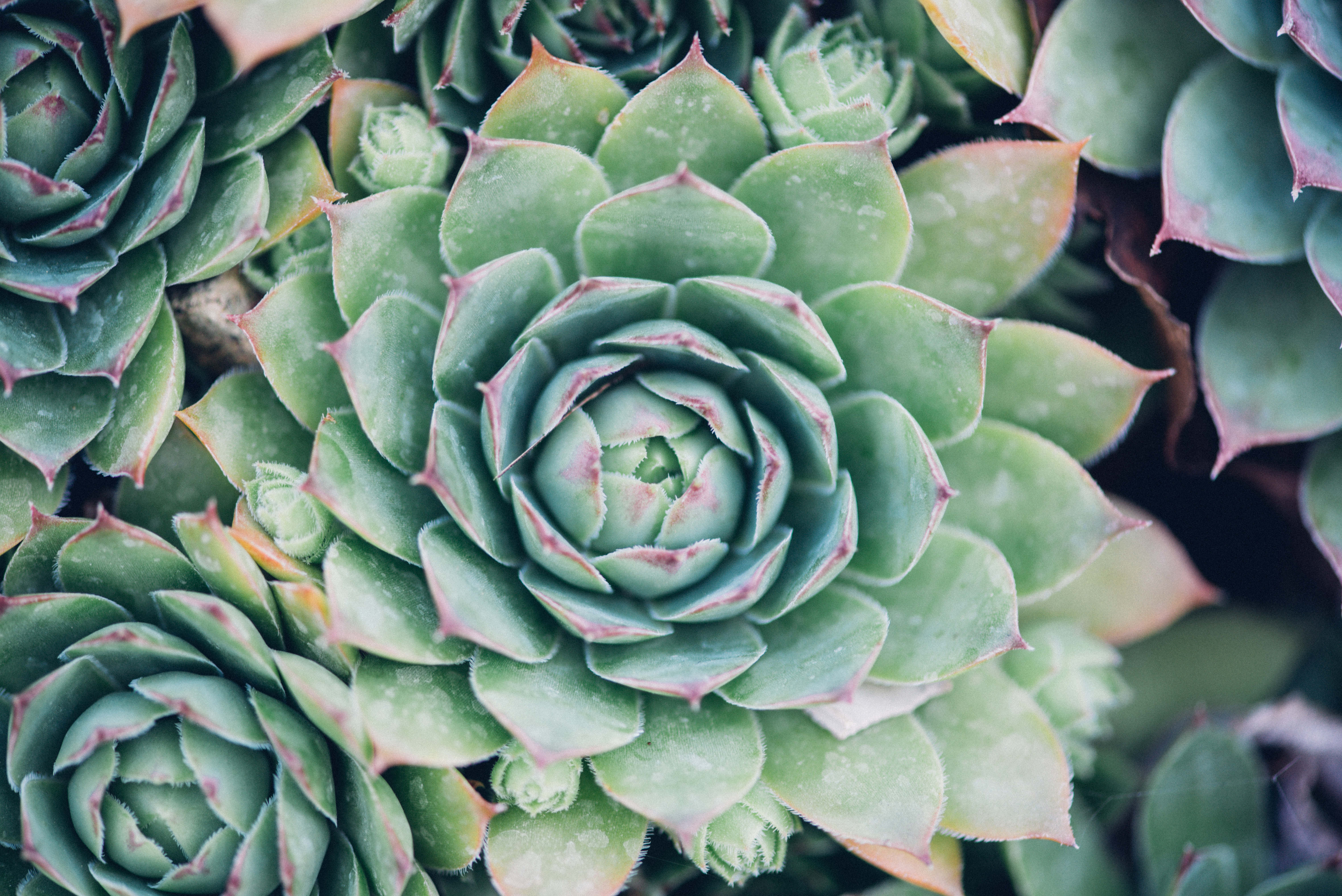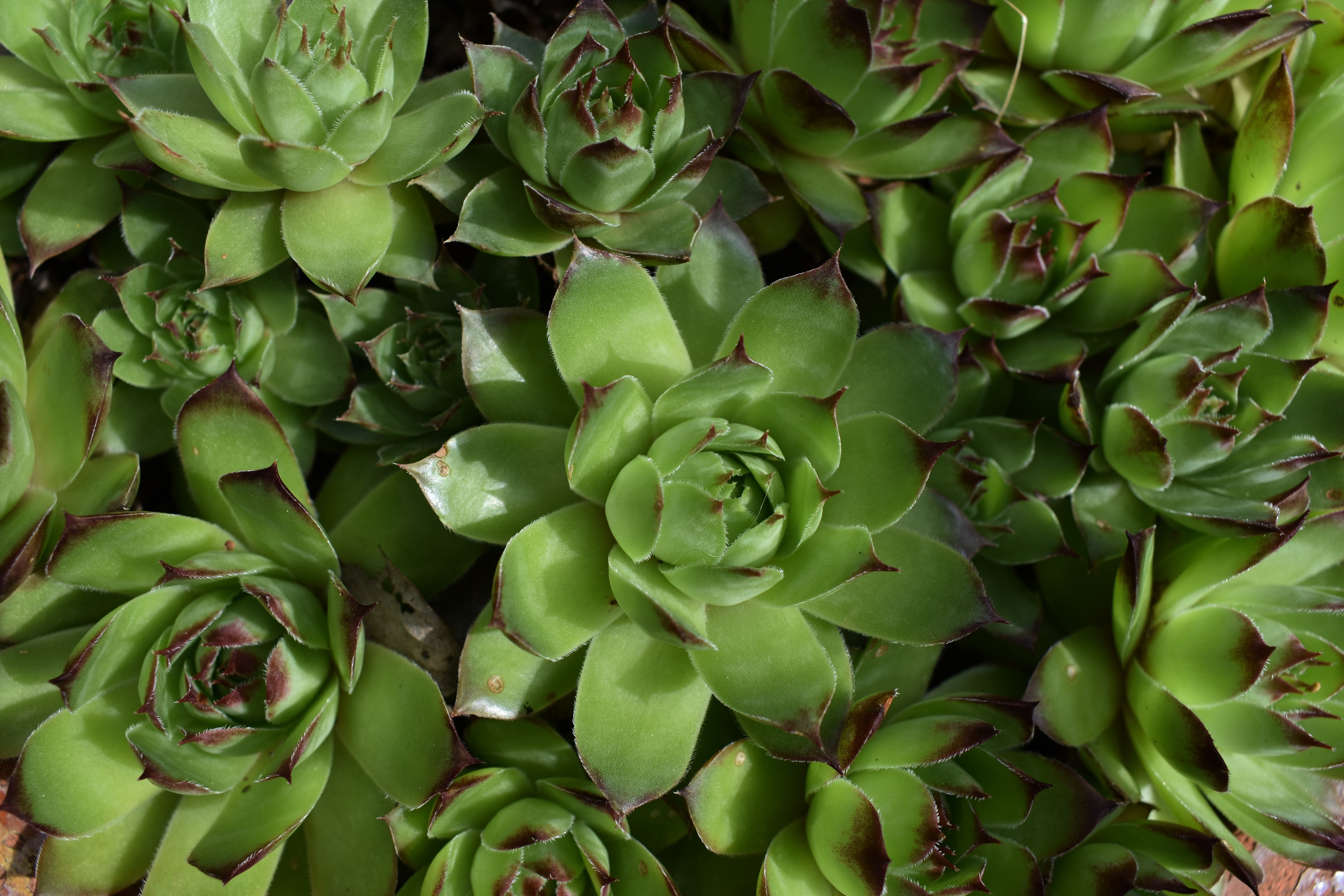Origin
The Common Houseleek (Sempervivum tectorum) is a succulent evergreen perennial known for its rosette of pointed leaves that are often tipped with a reddish-purple color.
This plant originates from the mountains of Europe, predominantly in the Carpathian and Balkan Mountains, meaning they're somewhat hardier than other succulents as they are able to survive in comparatively colder temperatures.
Sempervivum tectorum was first described by Linnaeus in 1753. The Latin name Sempervivum means to 'live forever' denoting this plant's adaptable, easy-care nature: they're a great choice for beginner plant owners as they are incredibly hard to kill and need very little maintenance.

Care
Succulents in general love sunshine, and the Common Houseleek is no exception to this. Place yours in a bright, sunny spot in your home in order to keep it healthy and happy. If you live in a particularly hot climate, you may need to protect your plant from the sun's harshest rays (such as in the afternoon when the sun is very hot), as otherwise your Common Houseleek's foliage may become scorched.
Also like with other succulents, these plants don't need much water at all. Their fleshy leaves allow them to store water for prolonged periods of time, and so they are quite drought-resistant. It's therefore very important that you don't overwater your Common Houseleek. You can use the 'soak and dry' method, where you water very rarely and only when the soil is completely dry, but when you do water you give plenty. You can keep adding water until it starts to flow out of the drainage holes in your plant pot, although you should always make sure that you empty out any excess water that collects beneath the pot.

Other
Common Houseleeks have traditionally been used medicinally for many centuries, prized for their anti-inflammatory and coolant properties. The leaves and juice from the plant were used to make poultices to treat ulcers, scalds and burns. However, although this plant is non-toxic and safe to handle, we still don't recommend that you try this yourself!
The Romans believed that planting a Common Houseleek could help to protect your home from lightning strikes. As such, they have something of a lucky reputation.
In other folklore, Common Houseleeks have been seen to protect households from witchcraft and to help bring good fortune and prosperity. Whether or not you believe this is true, these plants make a great gift for a loved one as they are so easy to care for and look great too!